- Home
- Alison Weir
The Princes in the Tower Page 3
The Princes in the Tower Read online
Page 3
The last of the 'original' narrative sources was The History of Henry VII by Sir Francis Bacon (1561-1626), published in 1622. This excellent, erudite work by a lawyer, statesman and Lord Chancellor, was for centuries the standard biography of Henry; well-researched, objective, and advanced for its time. Even today it stands up well in the
13
face of modern research. Placed as he was, Bacon had access to official records, some no longer extant, and his work has value for this alone.
The sources discussed above are so integral to the subject of the Princes that, as will be seen in the following chapters, they are indeed part of the plot. All these writers have, in their various ways, influenced the controversy about the Princes, and so we need to know about them, and their loyalties and prejudices, before we can consider what weight to give to their evidence. This is a crucial factor, because in that evidence lie the vital clues to the fate of the Princes.
14
2. The Sanctuary Child
In the fifteenth century the succession to the English crown was never stable. The Plantagenets had ruled England since 1154, and until 1399 the succession had generally passed fairly peacefully from father to son. But Edward III, who died in 1377, had several sons whom he endowed with dukedoms, thus calling into being a race of magnates or aristocrats related by blood to the King, some of whom ultimately became intent on claiming the throne. The first was Henry of Bolingbroke, son of John of Gaunt, Duke of Lancaster, fourth surviving son of Edward III. In 1399, Bolingbroke deposed, and later murdered, his childless cousin Richard II and usurped the throne himself as Henry IV, thus founding the royal House of Lancaster and overlooking the claim of Richard's designated heir, his third cousin Edmund Mortimer, then a child of seven, who was descended from Lionel of Antwerp, Duke of Clarence, second surviving son of Edward III.
Henry IV's title to the throne was therefore dubious, but what he had taken he held on to, and the reputation of his successor, Henry V, seemed to ensure that the House of Lancaster would continue to reign gloriously after his death. But Henry V died young unexpectedly in 1422, leaving as his heir a baby, Henry VI. Henry survived his minority, but he was, as Philippe de Commines tells us, 'a very ignorant and almost simple man', who cared little for the riches and show of this world. His reputation was saintly rather than regal, and as a ruler he was weak, possibly even mentally defective, being easily manipulated by his strong-minded queen, Margaret of Anjou, and his factious magnates.
15
Prominent amongst these magnates were the Beauforts, dukes of Somerset, descendants of the children of John of Gaunt by his third wife, Katherine Swynford, but born before their marriage. Henry IV had in 1407 confirmed Richard H's Act of Parliament legitimising the Beauforts, but had issued a royal patent barring them from the succession. Later on in the fifteenth century it would be argued that Letters Patent could not prevail against an Act of Parliament, and that the Beauforts did indeed have the right to inherit the Crown.
Then there was Richard, Duke of York, whose father, the Earl of Cambridge (a grandson of Edward III through his fifth son, Edmund, Duke of York), had been executed by Henry V in 1415 for plotting to seize the throne on behalf of Edmund Mortimer, whose sister Anne had been Cambridge's wife. Their son, Richard, was heir to the Mortimer claim to the throne, since Edmund died childless in 1425; that claim was based on descent through a woman from Lionel of Clarence, the second son of Edward III. As the Salic Law barring women from succeeding or transmitting a claim to the throne did not exist in England, York's was indeed a superior claim to that of Lancaster.
Richard was four when his father suffered execution, but he was restored to his inheritance by 1425. He married 'proud' Cecily Neville, daughter of the powerful Earl of Westmorland by Joan Beaufort, daughter of John of Gaunt; she bore him twelve children, in whom flowed the blood of three of Edward Ill's sons.
York was a haughty, remote man, capable of acting impulsively without prior consultation with others. Indecisive to a fault, he lacked political judgement and was unpopular at court. When not abroad on the King's business, he resided at his ducal seats at Fotheringhay Castle, Northamptonshire, Ludlow Castle on the Welsh Marches, and Bay-nard's Castle, his Thames-side mansion in London. He was nevertheless a force to be reckoned with in politics: in 1448 he formally adopted the surname Plantagenet, which had not been used by anyone in the royal House since Geoffrey Plantagenet, the father of Henry II, had died in 1151; and by 1450, he held, through inheritance, the vast lands of the former great baronies and earldoms of the Warennes, the Mortimers, the Clares, the Burghs, the Genvilles, the Braoses and the Marshals. And until Queen Margaret bore a son, he was heir-presumptive of Henry VI.
The causes of the civil wars known as the Wars of the Roses were
16
diffuse, and did not, to begin with, have anything to do with the succession. Faction feuds, weak government, over-mighty magnates, the loss of the English lands in France, and above all Henry VI's ineffectiveness as a ruler all gave grounds for the discontent that in the 1450s erupted into war, a war that was fought mainly by the nobility and which -- despite later, exaggerated Tudor propaganda -- hardly affected the population of three to four million souls or daily life in general. In fact, there were no more than thirteen weeks of actual fighting in thirty years. The name 'the Wars of the Roses' has its origins in the fifteenth century: the White Rose was a Yorkist badge, and the Red Rose was later declared by Henry VII to be symbolic of the House of Lancaster.
Henry VI's ineptitude in government meant that by 1455 men were beginning to question the title of the House of Lancaster to the crown. There were those who held that York had the better claim. The problem was that there was no written law appertaining to the succession. Later events would show that a dubious title did not matter if the monarch was strong and able to hold on to the throne. Thus might could and did triumph over right, as we shall see, and the legacy of these wars was to weaken the royal authority, encourage factions, and promote political instability.
In 1453 Henry VI took 'a sudden and thoughtless fright', according to the Paston Letters, and suffered what has recently been diagnosed as an attack of catatonic schizophrenia -- total mental withdrawal. This lasted fifteen months, during which time York acted as Protector of England and the Queen bore a son, Edward of Lancaster, whom the King acknowledged as his heir when he recovered. York's supporters, however, did all they could to cast doubts on the child's paternity. After his illness, Henry's health remained feeble, which gave rise to more jostling for power between the court factions -- on the one hand the Queen and the Beauforts, and on the other York and the powerful Neville earls of Salisbury and Warwick, the latter being later known as 'the Kingmaker' whose family had for a century been the most prominent in the North. Ousted from power as Protector, York took to the field and was victorious at the Battle of St Albans in 1455, after which there was a precarious peace for four years. But by 1459 the Queen, according to an anonymous Yorkist chronicler, was 'ruling the realm as her liked', promoting York's enemies and plotting to crush her
17
rival by force. Civil war broke out again and in September, 1460, after several indecisive battles, York marched on London and, in a move unpopular with both sides, claimed the crown for himself, basing his claim on the right of the heir-general over the heir-male. Parliament would not agree to his demand, but in October passed an Act of Accord which disinherited Prince Edward and recognised York as the King's heir.
This provoked an incensed Queen Margaret to decisive action, and on 30th December, 1460, York, his son Edmund, Earl of Rutland, and Salisbury were slain at the Battle of Wakefield. Two months later the Lancastrians scored another victory at St Albans, but York's claim had been inherited by his nineteen-year-old son, Edward, Earl of March, who secured London, had himself proclaimed king on 4th March, 1461, and annihilated the Queen's army at the bloody and decisive Battle of Towton on 29th March; Henry VI remained a fugitive until he was captu
red and imprisoned in the Tower in 1465. Edward returned to London where he was crowned King Edward IV on 28th June. The magnates willingly offered him fealty, and he quickly established himself as ruler of England, the first sovereign of the House of York.
The Wars of the Roses undoubtedly weakened the position of the Crown and created a political climate in which treachery flourished. Edward IV, however, would provide England with strong government, and during his reign trade and the arts flourished and many of his subjects grew prosperous. The conflict had touched the lives of the participants only, and had barely affected the country at large. Contemporary architecture was becoming less militaristic, as defensive castles were replaced by domestic manor houses around which moats were built for ornament rather than to keep out intruders. Only seven of the great aristocratic families became extinct as a result of the Wars of the Roses: there was no mass annihilation of the nobility, as has often been claimed.
Just one-tenth of the population lived in towns, for society was mainly rural. About 7S,ooo people lived in London, the largest city, which was by then firmly established as the political, commercial and cultural capital of England. In 1483 Dominic Mancini noted that
18
London merchants were extremely wealthy; this wealth came mainly from the importing of luxury goods from abroad. England's chief sources of foreign revenue were the wool and wool cloth trades with Flanders.
The English, however, hated foreigners, particularly the French. Their insularity was reflected in the growing sense of nationalism which during the fourteenth and fifteenth centuries had resulted in English replacing Norman French as the chief language of the realm. This in turn led to an increase in literacy amongst the people, so that in the early years of the sixteenth century Sir Thomas More could claim that more than 50 per cent of the population could read and write.
The late fifteenth century also saw a renewal of interest in the visual arts, particularly architecture, which led to the last flowering of the perpendicular style in England, to which St George's Chapel, Windsor, Eton College, King's College Chapel at Cambridge and the Henry VII Chapel in Westminster Abbey all bear witness.
While the aristocracy hankered after the old feudal ideals of order in society, the middle classes were rising in prominence and affluence and beginning to intermarry with the gentry classes. Most people, however, lived in mean dwellings and subsisted in poverty. Foreign observers described the ordinary working Englishman as gluttonous, work-shy and treacherous. Unfortunately, the law that required every able-bodied man to keep a weapon in readiness to assist his sovereign in an emergency frequently led to those same weapons being used on that sovereign's tax collectors, though there was no more violence or law-breaking in this period than at any other time in English mediaeval history.
* * *
From the beginning, Edward IV was a popular king. 'I am unable to declare how well the commons love him,' wrote one Londoner. 'Thus far he appears to be a just prince, and to mean to mend and organise matters otherwise than has been done hitherto.'
Edward was tall -- his skeleton, found in 1789, measured 6 feet 3 V2 inches -- brown-haired, broad-chested, well-built, always fashionably and extravagantly dressed, and, in the opinion of all observers, extraordinarily good looking. He was something of an exhibitionist, loving to show off his fine physique to onlookers. Yet he was courageous in
19
battle, energetic, intelligent, witty, genial and unusually accessible to his subjects. Those who crossed him found that he was also ruthless, violent and terrifying when his temper was roused. His chief vices, according to the unanimous opinion of contemporary chroniclers, were avarice, extravagance and lechery.
Edward's promiscuity was notorious. Mancini tells us he was 'licentious in the extreme'. He would seduce a woman, use her, and then carelessly abandon her, often passing her on to his friends or other courtiers. 'He pursued with no discrimination the married and unmarried, the noble and lowly.' But he 'took none by force'. Money, promises and his own sex-appeal were invariably enough to conquer all resistance, 'and having conquered them, he dismissed them'. The names of his mistresses are rarely recorded but in the early 1460s he had an intermittent affair with Elizabeth Lucy (nee Wayte), who bore him one, possibly two, children.
With his youth, looks and reputation, Edward IV was a prize for any princess in Europe and his marriageability was a considerable political asset. Warwick, now his chief magnate and councillor, urged a marriage alliance with France, whose king, Louis XI, had been lending support to Queen Margaret. But in September 1464, when the royal Council met at Reading Abbey to discuss a match with Louis' relative Bona of Savoy, whom Warwick had suggested as a bride, Edward stunned everyone present by announcing that he had been married since May to an English commoner whose name was Elizabeth Wydville.
Elizabeth was described by her enemies as being of lowly origins. The Wydvilles, who claimed descent from a Norman called William de Wydville and his wife Emma, a Saxon, were in fact an old family of minor gentry who had settled in Northamptonshire during the reign of Henry II. Their name is usually -- and incorrectly -- spelt Woodville, but that is a rare form in contemporary documents, in which it almost always appears as Wydville, Wydeville, Wydvil and Wydevile; on Elizabeth's tomb it is spelt Widville.
Elizabeth's grandfather, Richard Wydville I, distinguished himself fighting for Henry V in France, and his 'very greatly notable services' were rewarded with lands in that country, lucrative high offices, a knighthood and a seat on Henry VI's Council. His son, Richard Wydville II, born around 1405 and said by the French chronicler
20
Monstrelet to be the handsomest man in England, was knighted by Henry VI in 1426 and given his own command in France three years later. His family's chief residence at this time was a house called The Mote (rebuilt in the eighteenth century and now a Cheshire Home), east of Maidstone, Kent, and not far from Ightham where his aunt, Joan Wydville and her husband, Sir William Haute, owned a fine twelfth-century manor house still to be seen today.
In 1436 Sir Richard took the enormous liberty of marrying the Princess Jacquetta of Luxembourg, widow of Henry V's brother, the Duke of Bedford. Aged twenty and 'an exceedingly handsome woman', according to Monstrelet, she was the daughter of the French Count of St Pol and a descendant of Charlemagne. Bedford had married her two years before his death in 1435 because he wanted her brother's friendship. In 1436 she was therefore a desirable and rich widow, having inherited all her childless husband's estates. Her marriage to Sir Richard Wydville caused a resounding scandal. Her brother refused to have anything further to do with her, and Monstrelet says she and Richard 'could never visit the continent or her brother would have slain them both'. In England they were fined £1,000 for marrying without the King's consent, and raised the money by selling Bedford's lands. But Jacquetta still retained her title of Duchess of Bedford and ranked as first lady in the realm until Margaret of Anjou married Henry VI in 1445, at which time some of Jacquetta's lands were restored to her, including the manor of Grafton, Northamptonshire, where she and Richard settled. In 1449 he was raised to the peerage and created Baron Rivers.
Jacquetta and Richard had a large family -- eight boys and eight girls, of whom Elizabeth, born around 1437, was the eldest. The family's loyalties had always been to the House of Lancaster; Elizabeth served as a maid-of-honour to Margaret of Anjou, and when she was about fifteen she was married to a well-born Lancastrian knight, Sir John Grey of Groby, and went to live with him on his estate at Bradgate, near Charnwood Forest, in Leicestershire. Here, probably, their two sons were born, Thomas around 1455 and Richard about a year later. When the Wars of the Roses broke out, Sir John was given command of Henry VI's cavalry but was killed at the Battle of Towton in 1461. Fortunately he escaped attainder and his lands were not confiscated, although his widow was not left comfortably off. Lord Rivers and his
21
eldest son Anthony had also fought for Henry VI but had the presence
of mind to change sides and declare for Edward IV, who, despite having taunted Rivers the year before about his lowly birth and his scandalous marriage, welcomed and pardoned them.
No-one knows when Edward IV first became attracted to Elizabeth Wydville, but all commentators agree that the marriage was based on lust. For years afterwards, rumours about the King's courtship persisted. Sir Thomas More stated that Elizabeth waylaid Edward in Whittlebury Forest, kneeling with a child on either side and begging for financial help so enchantingly that he was quite overcome with desire for her. Fabyan said that Duchess Jacquetta, reputedly a witch, had cast a spell on the King. It was even rumoured that when Elizabeth refused to become Edward's mistress he had threatened rape, whereupon she had made to kill herself with a dagger; appalled, the King had offered her marriage. None of these tales are substantiated by contemporary evidence. Polydore Vergil sums up the truth when he says that Edward was led into wedlock 'by blind affection and not by the rule of reason'. The fact that he arranged to marry Elizabeth in secret proves that he knew he was making an unsuitable match and boycotting a major political advantage. He must certainly have been aware that no king since the Conquest had married a commoner and that Warwick was deep in negotiation for a French marriage. But these things counted for very little against his passion for Elizabeth Wydville.

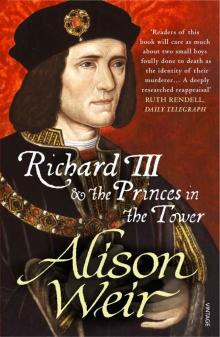 Richard III and the Princes in the Tower
Richard III and the Princes in the Tower Britain's Royal Families: The Complete Genealogy
Britain's Royal Families: The Complete Genealogy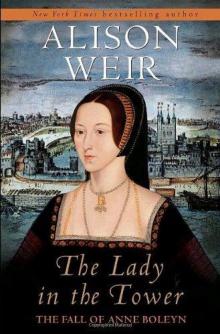 The Lady in the Tower: The Fall of Anne Boleyn
The Lady in the Tower: The Fall of Anne Boleyn Six Wives of Henry VIII
Six Wives of Henry VIII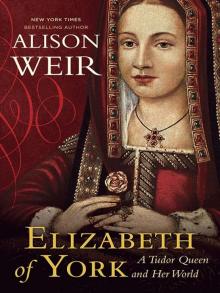 Elizabeth of York: A Tudor Queen and Her World
Elizabeth of York: A Tudor Queen and Her World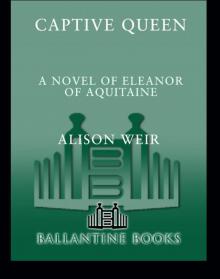 Captive Queen
Captive Queen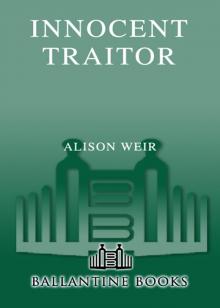 Innocent Traitor
Innocent Traitor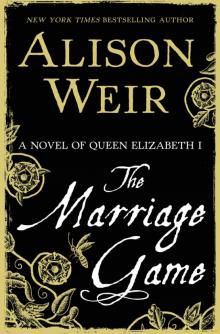 The Marriage Game
The Marriage Game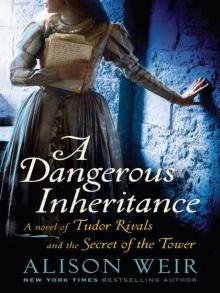 A Dangerous Inheritance
A Dangerous Inheritance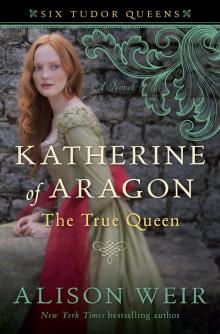 Katherine of Aragón: The True Queen
Katherine of Aragón: The True Queen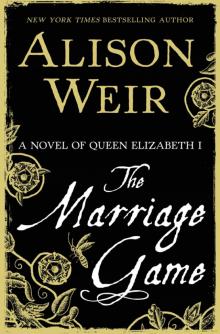 The Marriage Game: A Novel of Queen Elizabeth I
The Marriage Game: A Novel of Queen Elizabeth I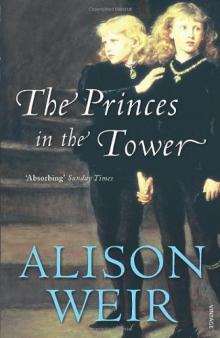 Princes in the Tower
Princes in the Tower Anne Boleyn: A King's Obsession
Anne Boleyn: A King's Obsession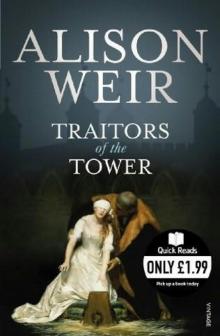 Traitors of the Tower
Traitors of the Tower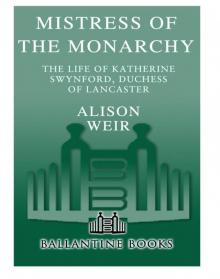 Mistress of the Monarchy: The Life of Katherine Swynford, Duchess of Lancaster
Mistress of the Monarchy: The Life of Katherine Swynford, Duchess of Lancaster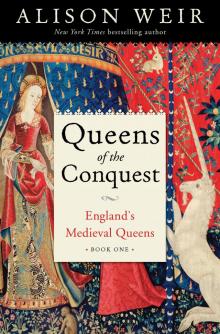 Queens of the Conquest: England’s Medieval Queens
Queens of the Conquest: England’s Medieval Queens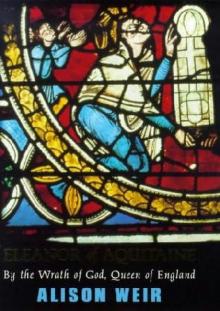 Eleanor of Aquitaine: A Life
Eleanor of Aquitaine: A Life Mary, Queen of Scots, and the Murder of Lord Darnley
Mary, Queen of Scots, and the Murder of Lord Darnley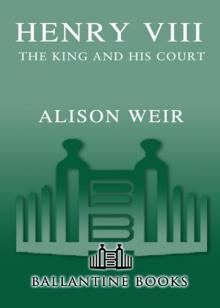 Henry VIII: The King and His Court
Henry VIII: The King and His Court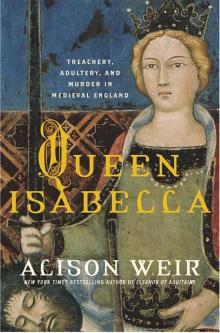 Queen Isabella: Treachery, Adultery, and Murder in Medieval England
Queen Isabella: Treachery, Adultery, and Murder in Medieval England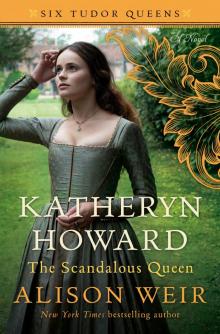 Katheryn Howard, the Scandalous Queen
Katheryn Howard, the Scandalous Queen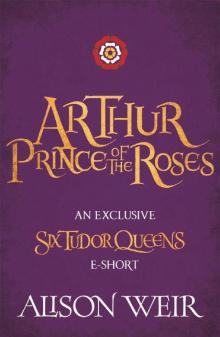 Arthur- Prince of the Roses
Arthur- Prince of the Roses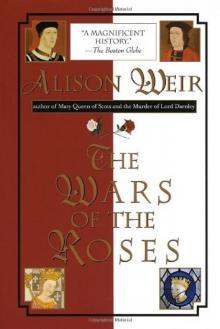 The Wars of the Roses
The Wars of the Roses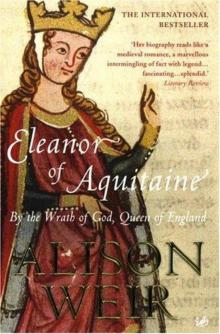 Eleanor of Aquitaine: By the Wrath of God, Queen of England
Eleanor of Aquitaine: By the Wrath of God, Queen of England Mary Boleyn: The Great and Infamous Whore
Mary Boleyn: The Great and Infamous Whore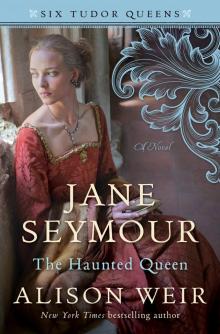 Jane Seymour: The Haunted Queen
Jane Seymour: The Haunted Queen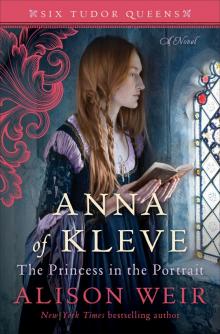 Anna of Kleve, the Princess in the Portrait
Anna of Kleve, the Princess in the Portrait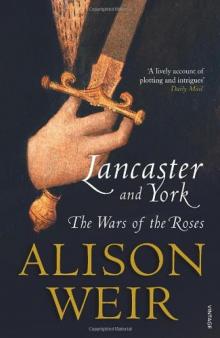 Lancaster and York: The Wars of the Roses
Lancaster and York: The Wars of the Roses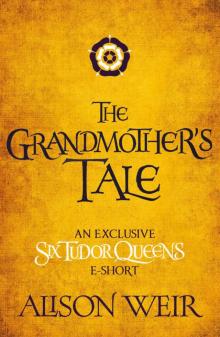 The Grandmother's Tale
The Grandmother's Tale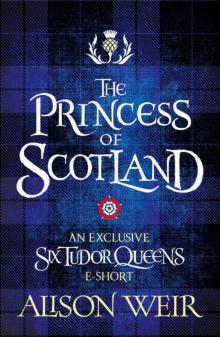 The Princess of Scotland (Six Tudor Queens #5.5)
The Princess of Scotland (Six Tudor Queens #5.5)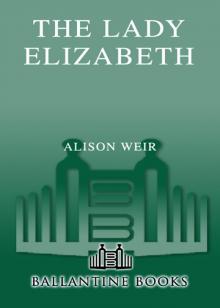 The Lady Elizabeth
The Lady Elizabeth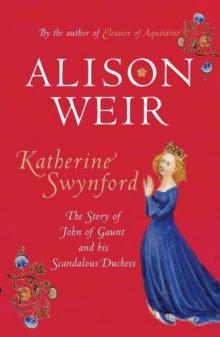 Katherine Swynford: The Story of John of Gaunt and His Scandalous Duchess
Katherine Swynford: The Story of John of Gaunt and His Scandalous Duchess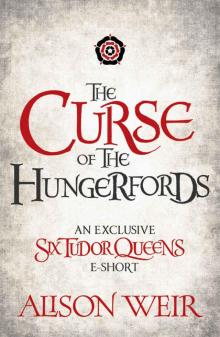 The Curse of the Hungerfords
The Curse of the Hungerfords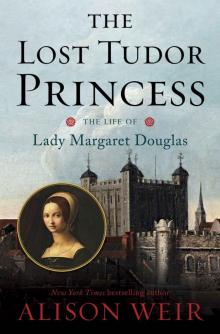 The Lost Tudor Princess: The Life of Lady Margaret Douglas
The Lost Tudor Princess: The Life of Lady Margaret Douglas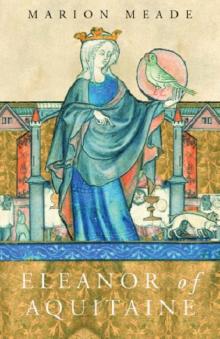 Eleanor of Aquitaine
Eleanor of Aquitaine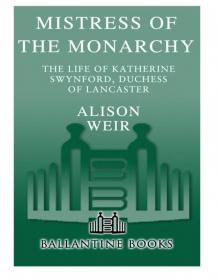 Mistress of the Monarchy
Mistress of the Monarchy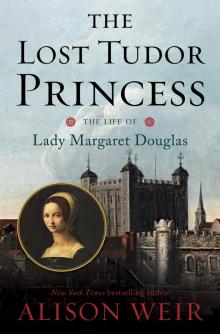 The Lost Tudor Princess
The Lost Tudor Princess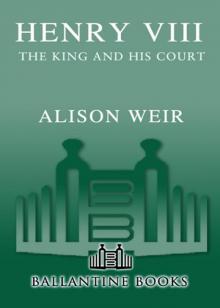 Henry VIII
Henry VIII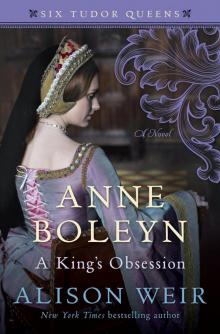 Anne Boleyn, a King's Obsession
Anne Boleyn, a King's Obsession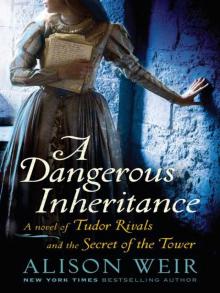 A Dangerous Inheritance: A Novel of Tudor Rivals and the Secret of the Tower
A Dangerous Inheritance: A Novel of Tudor Rivals and the Secret of the Tower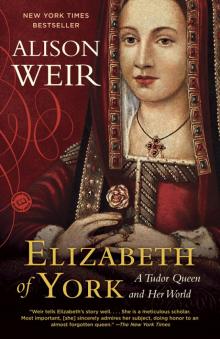 Elizabeth of York
Elizabeth of York Katherine of Aragon, the True Queen
Katherine of Aragon, the True Queen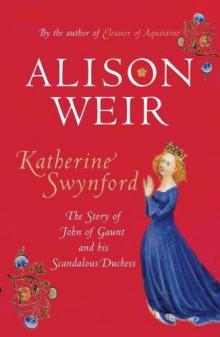 Katherine Swynford
Katherine Swynford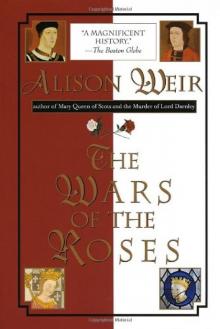 Wars of the Roses
Wars of the Roses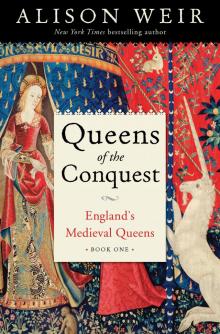 Queens of the Conquest
Queens of the Conquest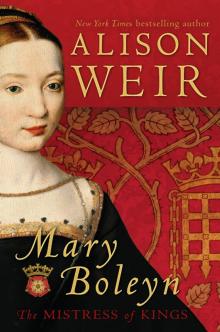 Mary Boleyn
Mary Boleyn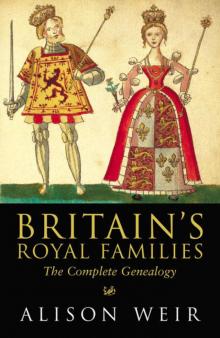 Britain's Royal Families
Britain's Royal Families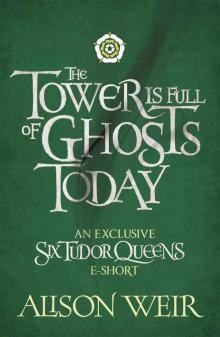 The Tower Is Full of Ghosts Today
The Tower Is Full of Ghosts Today Life of Elizabeth I
Life of Elizabeth I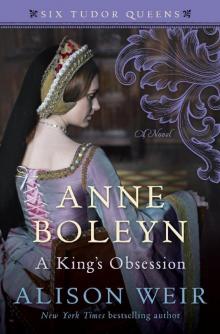 Anne Boleyn A King's Obssession
Anne Boleyn A King's Obssession Lancaster and York
Lancaster and York Jane Seymour, the Haunted Queen
Jane Seymour, the Haunted Queen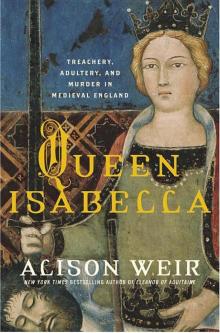 Queen Isabella
Queen Isabella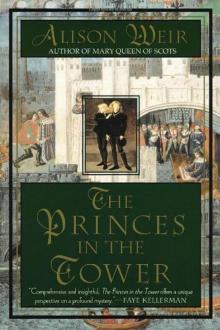 The princes in the tower
The princes in the tower